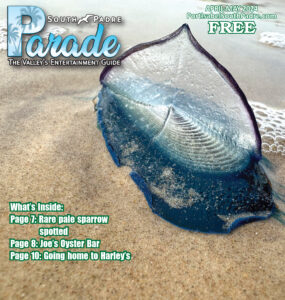By STEVE HATHCOCK
Special to the PRESS
The small Mexican town of Bagdad, located across the border at the mouth of the Rio Grande, would assume its place in history and sustain the Southern cause throughout the Civil war. The Union did not desire a war with Mexico and was bound by treaties to allow shipping in and out of its southern neighbor’s ports. The Europeans, anxious to protect their own interests, (the merchants were very persuasive in their economic arguments), sent modern warships to patrol the international waters of the Gulf. This was to ensure no foreign shipping would be molested while engaging in legitimate trade with Mexico. At any given time, there could be several dozen of these ships of war, lying at anchor just off the mouth of the river. Not willing to antagonize the Europeans, the Union was forced to deal with the situation as best as they could.”
The town of Bagdad was wide open during the war years. In his book, “Backdoor at Bagdad, The Civil War on the Rio Grande,” author James A. Irby writes:
“Bagdad, until cotton times, had been a miserable collection of fishermen’s shanties. In a few months, all this changed. To this town, peddlers, gamblers, swindlers and smugglers-the backwash of the world-found their way in great numbers, augmented by the intermittent visits of soldiers from the French, Austrian, Belgian and Mexican Armies. So good was business that laborers made up to $10.00 per day in specie, and the owners of skiffs and lighters (small craft carrying cargo through the treacherous surf to waiting ocean going vessels anchored offshore) could draw upwards of $40.00 per day. Stagecoaches made ten trips a day to and from Matamoras. The little fishing village’s population soon grew to over 15,000 souls.”
An editorial in the Brownsville Ranchero described Bagdad as a town in which “Fandangos were held every night and women as beautiful as houris exhibit their charms, without the least reserve!”
Lee’s surrender brought an end to the port’s usefulness. The next couple of years were quite chaotic. Bandits, deserters from both armies, and desperadoes roamed the area at will. Banks were not safe and most people hid their valuables close at hand. In the fall of 1867, a great storm sprang up, roaring in from the Gulf with little warning. The surprised residents fled Bagdad with little but the clothes on their backs. Following age-old traditions when threatened by man or nature, many of the people had hastily thrown their money and other valuables into their privies before evacuating the town. In the past, it had been a simple matter of digging a hole and recovering one’s property. A bit smelly perhaps, but a small price to pay for the safety of one’s treasure.
This was a bad storm and its effects were felt as far away as San Antonio, 300 miles to the north. Brownsville suffered heavy damage and Bagdad and the little town of Clarksville, directly across the river, were both totally wiped out. With no landmarks remaining it was impossible for the returning citizens to recover their valuables. If the old stories are true, an untold amount of gold and silver remains unclaimed to this day.
Want the whole story? Pick up a copy of the Port Isabel-South Padre Press, or subscribe to our E-Edition by clicking here.


Comments